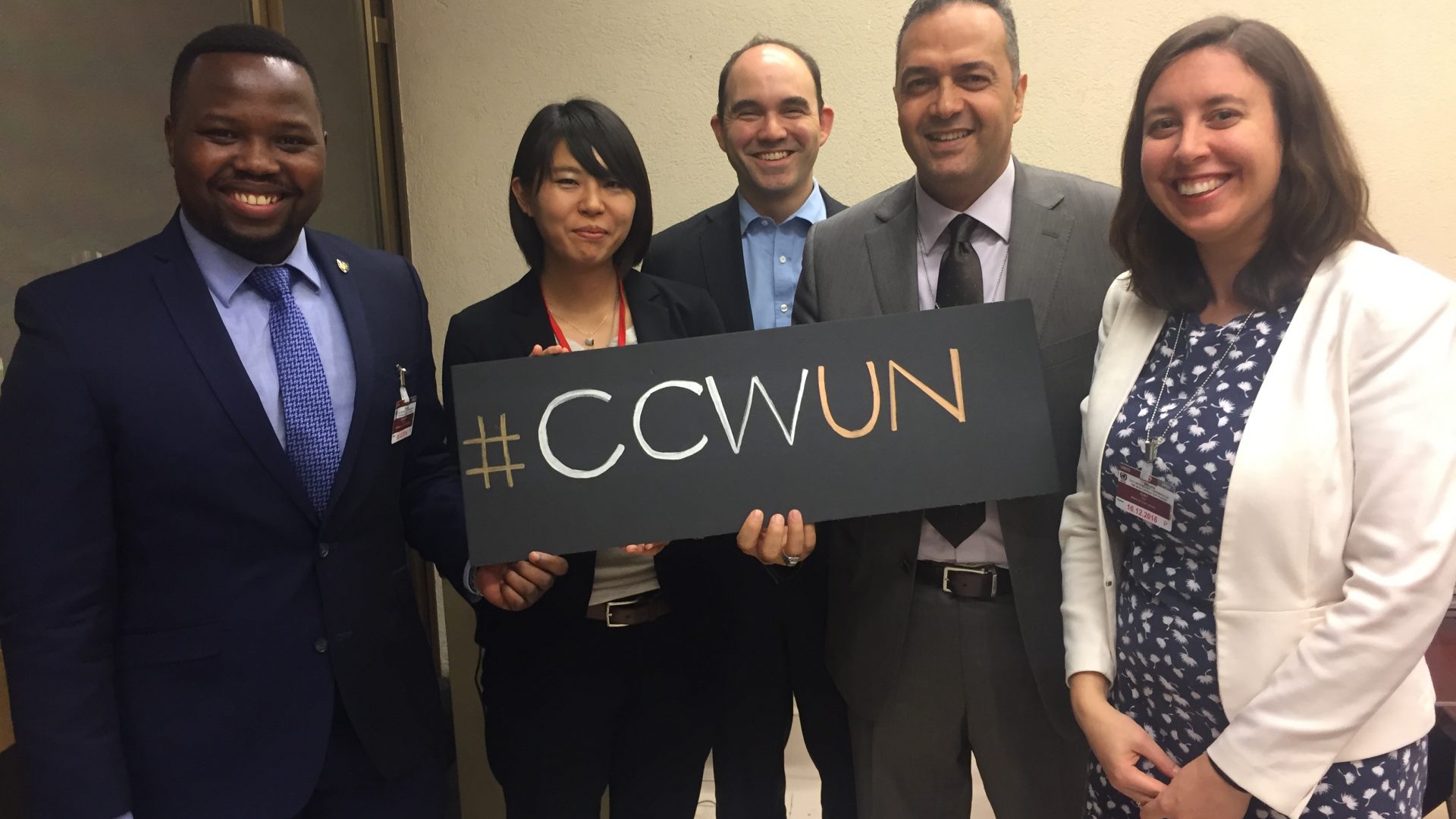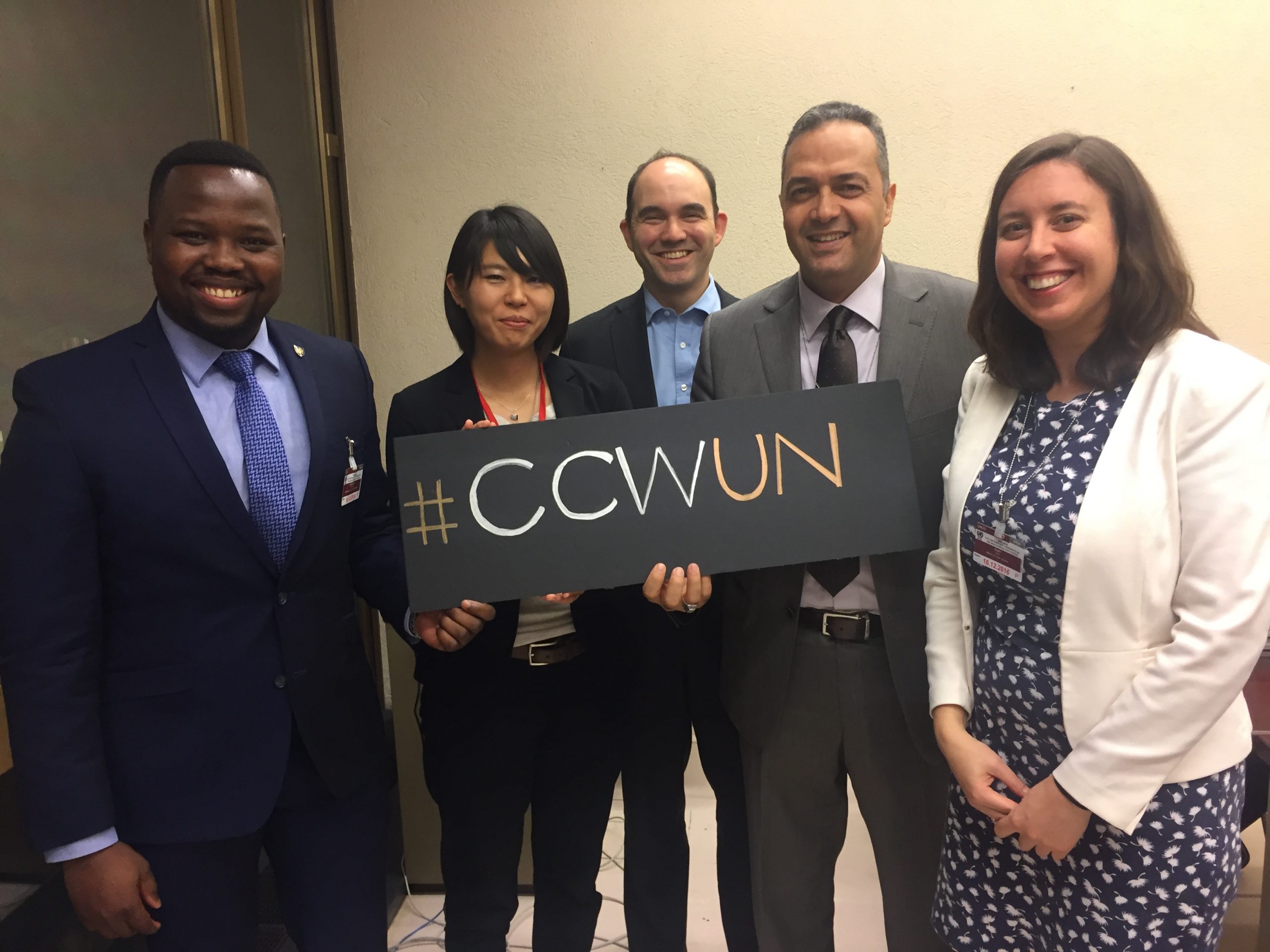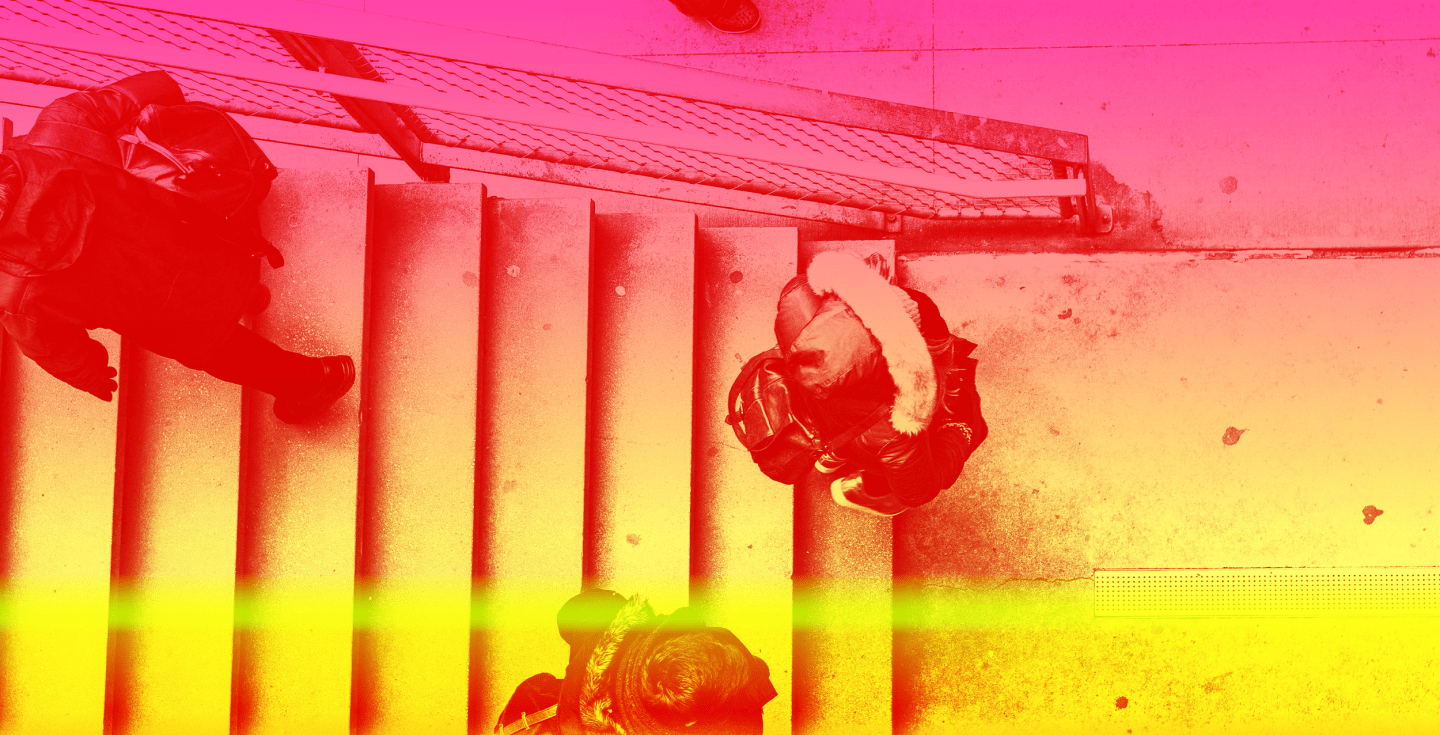
States convene to discuss killer robots

The first meeting of the Convention on Conventional Weapons (CCW) Group of Governmental Experts on lethal autonomous weapons systems opens at the United Nations (UN) Palais des Nations in Geneva on Monday, 13 November. The following “frequently asked questions” review the meeting’s agenda and objectives as well as the expectations of the Campaign to Stop Killer Robots.
The formal proceedings of this meeting will not be broadcast live via the web or other means, but country statements will be posted online and campaigners will provide updates, including on Twitter using the hashtag #CCWUN.
CCW delegates and interested media are invited to attend the campaign’s side event briefing on Monday, 13 November at 13:00 in Conference Room XXII.
Frequently Asked Questions
What is the Convention on Conventional Weapons (CCW)?
The 1980 Convention on Conventional Weapons (CCW) is a framework treaty that prohibits or restricts certain weapons considered to cause unnecessary or unjustifiable suffering. Its 1995 protocol banning blinding lasers is an example of a weapon being preemptively banned before it was acquired or used.
A total of 125 nations are “high contracting” or state parties to the CCW, including all five permanent members of the UN Security Council. In 2017, signatory Afghanistan ratified the CCW in August, while Lebanon ratified in April. During 2016, Côte d’Ivoire, Lesotho, and Montenegro ratified the CCW.
What are killer robots?
Killer robots are weapons systems that, once activated, would select and fire on targets without meaningful human control. They are variously termed fully autonomous weapons or lethal autonomous weapons systems.
The concern is that low-cost sensors and rapid advances in artificial intelligence are making it increasingly possible to design weapons systems that would target and attack without further human intervention. If this trend towards autonomy continues, the fear is that humans will start to fade out of the decision-making loop, first retaining only a limited oversight role, and then no role at all.
The US and others state that lethal autonomous weapon systems “do not exist” and do not encompass remotely piloted drones, precision-guided munitions, or defensive systems. Most existing weapons systems are overseen in real-time by a human operator and tend to be highly constrained in the tasks they are used for, the types of targets they attack, and the circumstances in which they are used.
While the capabilities of future technology are uncertain, there are strong reasons to believe that fully autonomous weapons could never replicate the full range of inherently human characteristics necessary to comply with international humanitarian law’s fundamental rules of distinction and proportionality. Existing mechanisms for legal accountability are ill suited and inadequate to address the unlawful harm that fully autonomous weapons would be likely to cause.
Why are states discussing killer robots?
Representatives from more than 70 states are expected to attend the first meeting of the CCW Group of Governmental Experts on lethal autonomous weapons systems on 13-17 November 2017, as well as participants from UN agencies such as UNIDIR, the International Committee of the Red Cross (ICRC), and Campaign to Stop Killer Robots.
This is not the first time that nations have discussed this topic at the CCW. In 2014-2016, the CCW held three informal meetings of experts, each approximately one week long, to discuss lethal autonomous weapons systems. At their last meeting in April 2016, states agreed for the first time on recommendations for future action, proposing the establishment of an open-ended Group of Governmental Experts (GGE) to move deliberations to the next level. At the CCW’s Fifth Review Conference last December, states established the Group of Governmental Experts (GGE) on lethal autonomous weapons systems and scheduled for it to meet twice in 2017.
The first meeting of the Group of Governmental Experts was postponed earlier this year and then cancelled due to the failure of certain states to pay their assessed dues for the convention’s meetings. Brazil owed 70 percent of the CCW’s debt, but paid two months ago, reducing the CCW deficit to $56,000.
Nations first agreed to begin discussing lethal autonomous weapons at end of 2013, one year after non-governmental organizations co-founded the Campaign to Stop Killer Robots to work for a preemptive ban on development, production, and use of fully autonomous weapons. The decision to talk about the issue was also influenced by an April 2013 report by the UN Special Rapporteur on extrajudicial, summary or arbitrary executions detailing ethical, legal, and other concerns raised by lethal autonomous robots.
The first meeting of the CCW Group of Governmental Experts will be followed by annual Meeting of High Contracting Parties on 22-24 November, where states are expected to decide on the CCW’s future work on lethal autonomous weapons systems.
What will happen at the CCW meeting?
Organization of the five-day Group of Governmental Experts is the responsibility its chair Ambassador Amandeep Singh Gill of India, with the support of the Geneva office of the UN Office for Disarmament Affairs and particularly the CCW implementation support unit.
According to the programme of work and food-for-thought paper prepared by Ambassador Gill, the GGW’s first meeting on 13-17 November will focus on three main substantive areas: 1) Examination of various dimensions of emerging technologies; 2) Military effects; and 3) Legal and ethical dimensions. States will have the opportunity to provide their views, including on the call for a ban and other ways to address concerns over lethal autonomous weapons systems.
The GGE will open at 10:00 on Monday, 13 November with general statements. The aim is to complete the statements by lunchtime (13:00) or else return to them on Wednesday. Then at 15:00 on Monday afternoon, the first of four panel discussions will take place, focusing on technology. Tuesday morning’s panel is on military effects, while Tuesday afternoon is on legal and ethical aspects.
Wednesday morning may be begin with more general statements, including by the ICRC and NGOs. Then the rest of the day is open for delegations to contribute their views to an “interactive discussion” on the chair’s food-for-thought paper. Thursday morning is another open discussion on “The Way Forward” followed by the first reading of the chair’s draft report.
Friday morning starts with a final panel on “crosscutting issues” that will be followed in the afternoon by adoption of the final report containing recommendations for future work on lethal autonomous weapons systems.
Will the states at the CCW ban killer robots?
The 2017 GGE meeting is not working towards a specific outcome or negotiating a new CCW protocol to ban or regulate lethal autonomous weapons. The Campaign to Stop Killer Robots urges all nations that have not yet done so to join the 19 countries that support the call for a ban on lethal autonomous weapons system and work towards that objective.
The Campaign to Stop Killer Robots believes that CCW states should explicitly acknowledge that the GGE will result in an agreement to move to formal negotiations, with such a mandate adopted at the CCW’s 2018 Meeting of High Contracting Parties. It calls on states to agree to the following measures at the CCW meetings this month:
– Hold at least four weeks of meetings of the Group of Governmental Experts in 2018, including during the first half of the year;
– Retain the long list of topics contained in the GGE mandate agreed by the Fifth Review Conference and commit to identify options for action by the CCW, including the preferred outcome;
– Acknowledge the need for international regulation to address autonomy in the critical functions of weapon systems and elaborate their position on the call to prohibit weapons systems that lack meaningful human control.
Does the campaign have any comments on the agenda for the CCW meeting?
The Campaign to Stop Killer Robots is concerned that the agenda or programme of work for this first meeting of the GGE is too narrow in some respects and too broad in others. Human rights aspects are missing completely from the agenda and there appears to be insufficient time to consider proliferation and security concerns as well as the human control needed in future weapons systems. It was widely hoped the GGE could begin developing a conceptual understanding on a working definition of what are lethal autonomous weapons systems, but the GGE chair has put this discussion off until 2018.
A “food for thought” paper disseminated by the GGE chair with key questions for states contains several technology and legal/ethical issues that do not directly relate to the issue of lethal autonomous weapons systems. Given the ongoing movement towards autonomy in the critical functions of weapons, the political work of the GGE must proceed swiftly and focus on addressing these distinct concerns. There is a risk that broadening the scope of discussion to include wider issues of artificial intelligence and society shifts the focus beyond the GGE mandate to consider “questions relating to the emerging technologies of lethal autonomous weapons systems.” There is a need for states to foster shared political understanding of how and where the boundaries of autonomy in weapon systems should be drawn.
The campaign is also concerned there is still too much reliance on outside experts at the CCW a time when the new GGE setting has raised the expectation of more substantive engagement by various experts working in government. After four years of input from external experts, the time has come for state experts to make explicit where they draw the line in increasing autonomy in weapon systems and determine how to ensure the line into full autonomy is not crossed.
Who will participate from the Campaign to Stop Killer Robots?
The Campaign to Stop Killer Robots delegation to the CCW meeting of experts is comprised 35 campaigners from member NGOs in countries including Canada, Colombia, Egypt, Germany, Japan, the Netherlands, South Africa, Switzerland, UK, and US. It includes key spokespersons Nobel Peace Laureate Jody Williams and roboticist Noel Sharkey. Following the precedent set by previous CCW meetings, the Campaign to Stop Killer Robots will take its seat at the table at every CCW session, as well as make statements, circulate documents, and host two side events. See the Campaign Delegation List and Flyers for Side Events on 13 November and 22 November.
The Campaign to Stop Killer Robots and others are issuing publications and undertaking actions for the GGE meeting. See, for example, this memo in Spanish on “Robots Asesinos” prepared by SEHLAC, the regional security network in Latin America.
Where are the women at the GGE meeting?
Women comprise 20% of the panel speakers invited to address the CCW Group of Governmental Experts meeting on lethal autonomous weapons systems (5 of 25 speakers). Last year, women accounted for 42% of expert speakers at the CCW meeting on lethal autonomous weapons systems (14 of 34 speakers), while it was 33% in 2015 (10 of 30 speakers) and zero in 2014 (0 of 18 speakers). Women comprise half of the Campaign to Stop Killer Robots delegation to the CCW meeting, including side event briefing speakers and media spokespersons.
What about the Human Rights Council?
The GGE marks the first time that the UN Special Rapporteur on extrajudicial, summary or arbitrary executions has not addressed a CCW meeting on lethal autonomous weapons. This raises the question of how to address human rights concerns with these weapons, particularly their use in law enforcement, border control and other circumstances outside of armed conflict.
The first multilateral discussion on fully autonomous weapons took place at the Human Rights Council in May 2013, but states have not proposed any work to address fully autonomous weapons in this forum. Several have affirmed the relevance of the Human Rights Council in the emerging international debate over the weapons, including Austria, Brazil, Ireland, Sierra Leone, and South Africa.
In February 2016, the UN Special Rapporteur on extrajudicial, summary or arbitrary executions and the Special Rapporteur on the rights to freedom of peaceful assembly and of association issued a report containing the recommendation that “autonomous weapons systems that require no meaningful human control should be prohibited.”
What happens after the GGE meeting?
States will reconvene for the CCW’s Meeting of High Contracting Parties on 22-24 November 2017. Ambassador Matthew Rowland of the UK is serving as president of this meeting, which will decide on future CCW work on killer robots when states adopt the meeting’s final report on the afternoon of Friday, 24 November.
The Campaign to Stop Killer Robots will hold a side event briefing at the UN in Geneva on 22 November to provide its evaluation of the GGE meeting and comments on the way ahead. It is alarmed by the way that the CCW process on lethal autonomous weapons systems has been set back this year, ostensibly by financial obstacles.
For more information, see:
- Programme of work for the GGE meeting
- Reaching Critical Will webpage on the 2017 CCW meetings.
- Campaign delegation list, country views, and reports on the informal CCW meetings on lethal autonomous weapons systems held May 2014, April 2015, and April 2016, as well as the Review Conference in December 2016.
- The campaign’s social media accounts on Instagram, Facebook, and Twitter.


